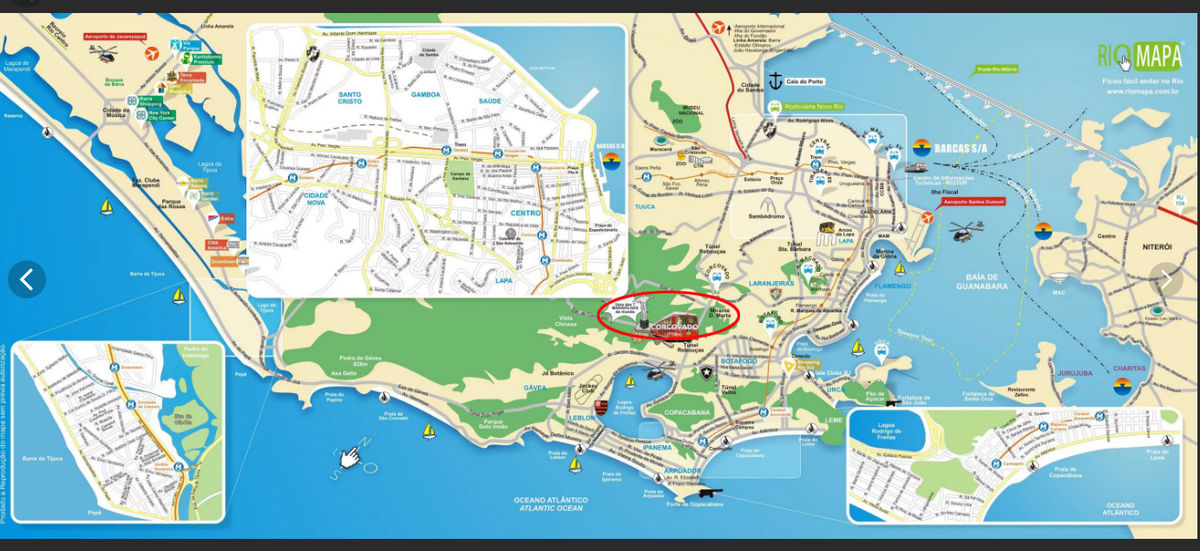South America: Rio De Janeiro, Brazil Part 3 - Christ The Redeemer
Jun 13, 2022 14:50:26 #
One of the highlights of our visit to Rio was the ride up Corcovado Mountain to the world-famous Christ the Redeemer statue and the magnificent vistas of the city that this spot provided.
Christ the Redeemer (Portuguese: Cristo Redentor, standard Brazilian Portuguese: [ˈkɾistu ʁedẽˈtoʁ], local pronunciation: [ˈkɾiɕtŭ̥ xe̞dẽˈtoɦ]) is an Art Deco statue of Jesus Christ in Rio de Janeiro, Brazil, created by French sculptor Paul Landowski and built by Brazilian engineer Heitor da Silva Costa, in collaboration with French engineer Albert Caquot. Romanian sculptor Gheorghe Leonida fashioned the face. Constructed between 1922 and 1931, the statue is 30 metres (98 ft) high, excluding its 8-metre (26 ft) pedestal. The arms stretch 28 metres (92 ft) wide. It is made of reinforced concrete and soapstone.
The statue weighs 635 metric tons (625 long, 700 short tons), and is located at the peak of the 700-metre (2,300 ft) Corcovado mountain in the Tijuca National Park overlooking the city of Rio de Janeiro. A symbol of Christianity around the world, the statue has also become a cultural icon of both Rio de Janeiro and Brazil and was voted one of the New Seven Wonders of the World.
HISTORY
Vincentian priest Pedro Maria Boss first suggested placing a Christian monument on Mount Corcovado in the mid-1850s to honor Princess Isabel, regent of Brazil and the daughter of Emperor Pedro II, but the project was not approved. In 1889 the country became a republic, and owing to the separation of church and state the proposed statue was dismissed.
The Catholic Circle of Rio made a second proposal for a landmark statue on the mountain in 1920. The group organized an event called Semana do Monumento ("Monument Week") to attract donations and collect signatures to support the building of the statue. The organization was motivated by what they perceived as "Godlessness" in the society. The donations came mostly from Brazilian Catholics. The designs considered for the "Statue of the Christ" included a representation of the Christian cross, a statue of Jesus with a globe in his hands, and a pedestal symbolizing the world. The statue of Christ the Redeemer with open arms, a symbol of peace, was chosen.
Local engineer Heitor da Silva Costa and artist Carlos Oswald designed the statue. French sculptor Paul Landowski created the work.
In 1922, Landowski commissioned fellow Parisian Romanian sculptor Gheorghe Leonida, who studied sculpture at the Fine Arts Conservatory in Bucharest and in Italy.
A group of engineers and technicians studied Landowski's submissions and felt building the structure of reinforced concrete (designed by Albert Caquot) instead of steel was more suitable for the cross-shaped statue. The concrete making up the base was supplied from Limhamn, Sweden. The outer layers are soapstone, chosen for its enduring qualities and ease of use. Construction took nine years, from 1922 to 1931, and cost the equivalent of US$250,000 (equivalent to $3,800,000 in 2021) and the monument opened on October 12, 1931. During the opening ceremony, the statue was to be lit by a battery of floodlights turned on remotely by Italian shortwave radio inventor Guglielmo Marconi, stationed 9,200 kilometres (5,700 mi) away in Rome but because of bad weather, the lights were activated on site.
In October 2006, on the 75th anniversary of the statue's completion, Cardinal Eusebio Oscar Scheid, Archbishop of Rio, consecrated a chapel, named after Brazil's patron saint—Our Lady of the Apparition—under the statue, allowing Catholics to hold baptisms and weddings there.
Lightning struck the statue during a violent thunderstorm on February 10, 2008, causing some damage to the fingers, head and eyebrows. The Rio de Janeiro state government initiated a restoration effort to replace some of the outer soapstone layers and repair the lightning rods on the statue. Lightning damaged it again on January 17, 2014, dislodging a finger on the right hand.
In 2010, a massive restoration of the statue began. Work included cleaning, replacing the mortar and soapstone on the exterior, restoring iron in the internal structure, and waterproofing the monument. Vandals attacked the statue during renovation, spraying paint along the arm. Mayor Eduardo Paes called the act "a crime against the nation". The culprits later apologized and presented themselves to the police.
In reference to Brazil striker Ronaldo's usual goal celebration of both arms outstretched, the Pirelli tyre company ran a 1998 commercial in which he replaced the statue while in an Inter Milan strip. The commercial was controversial with the Catholic Church.
In 1990, several organizations, including the Archdiocese of Rio de Janeiro, media company Grupo Globo, oil company Shell do Brasil, environmental regulator IBAMA, National Institute of Historic and Artistic Heritage, and the city government of Rio de Janeiro entered into an agreement to conduct restoration work.
More work on the statue and its environs was conducted in 2003 and early 2010. In 2003, a set of escalators, walkways, and elevators were installed to facilitate access to the platform surrounding the statue. The four-month restoration in 2010 focused on the statue itself. The statue's internal structure was renovated and its soapstone mosaic covering was restored by removing a crust of fungi and other microorganisms and repairing small cracks. The lightning rods located in the statue's head and arms were also repaired, and new lighting fixtures were installed at the foot of the statue.
The restoration involved one hundred people and used more than 60,000 pieces of stone taken from the same quarry as the original statue. During the unveiling of the restored statue, it was illuminated with green-and-yellow lighting in support of the Brazil national football team playing in the 2010 FIFA World Cup.
Maintenance work needs to be conducted periodically because of the strong winds and erosion to which the statue is exposed, as well as lightning strikes. The original pale stone is no longer available in sufficient quantity, and replacement stones are increasingly darker in hue.
https://en.wikipedia.org/wiki/Christ_the_Redeemer_%28statue%29
For more images and a narrative, please see my previous post:
https://www.uglyhedgehog.com/t-741364-1.html#13198577
https://www.uglyhedgehog.com/t-741566-1.html#13202610
I hope you enjoy them.
Mark
Christ the Redeemer (Portuguese: Cristo Redentor, standard Brazilian Portuguese: [ˈkɾistu ʁedẽˈtoʁ], local pronunciation: [ˈkɾiɕtŭ̥ xe̞dẽˈtoɦ]) is an Art Deco statue of Jesus Christ in Rio de Janeiro, Brazil, created by French sculptor Paul Landowski and built by Brazilian engineer Heitor da Silva Costa, in collaboration with French engineer Albert Caquot. Romanian sculptor Gheorghe Leonida fashioned the face. Constructed between 1922 and 1931, the statue is 30 metres (98 ft) high, excluding its 8-metre (26 ft) pedestal. The arms stretch 28 metres (92 ft) wide. It is made of reinforced concrete and soapstone.
The statue weighs 635 metric tons (625 long, 700 short tons), and is located at the peak of the 700-metre (2,300 ft) Corcovado mountain in the Tijuca National Park overlooking the city of Rio de Janeiro. A symbol of Christianity around the world, the statue has also become a cultural icon of both Rio de Janeiro and Brazil and was voted one of the New Seven Wonders of the World.
HISTORY
Vincentian priest Pedro Maria Boss first suggested placing a Christian monument on Mount Corcovado in the mid-1850s to honor Princess Isabel, regent of Brazil and the daughter of Emperor Pedro II, but the project was not approved. In 1889 the country became a republic, and owing to the separation of church and state the proposed statue was dismissed.
The Catholic Circle of Rio made a second proposal for a landmark statue on the mountain in 1920. The group organized an event called Semana do Monumento ("Monument Week") to attract donations and collect signatures to support the building of the statue. The organization was motivated by what they perceived as "Godlessness" in the society. The donations came mostly from Brazilian Catholics. The designs considered for the "Statue of the Christ" included a representation of the Christian cross, a statue of Jesus with a globe in his hands, and a pedestal symbolizing the world. The statue of Christ the Redeemer with open arms, a symbol of peace, was chosen.
Local engineer Heitor da Silva Costa and artist Carlos Oswald designed the statue. French sculptor Paul Landowski created the work.
In 1922, Landowski commissioned fellow Parisian Romanian sculptor Gheorghe Leonida, who studied sculpture at the Fine Arts Conservatory in Bucharest and in Italy.
A group of engineers and technicians studied Landowski's submissions and felt building the structure of reinforced concrete (designed by Albert Caquot) instead of steel was more suitable for the cross-shaped statue. The concrete making up the base was supplied from Limhamn, Sweden. The outer layers are soapstone, chosen for its enduring qualities and ease of use. Construction took nine years, from 1922 to 1931, and cost the equivalent of US$250,000 (equivalent to $3,800,000 in 2021) and the monument opened on October 12, 1931. During the opening ceremony, the statue was to be lit by a battery of floodlights turned on remotely by Italian shortwave radio inventor Guglielmo Marconi, stationed 9,200 kilometres (5,700 mi) away in Rome but because of bad weather, the lights were activated on site.
In October 2006, on the 75th anniversary of the statue's completion, Cardinal Eusebio Oscar Scheid, Archbishop of Rio, consecrated a chapel, named after Brazil's patron saint—Our Lady of the Apparition—under the statue, allowing Catholics to hold baptisms and weddings there.
Lightning struck the statue during a violent thunderstorm on February 10, 2008, causing some damage to the fingers, head and eyebrows. The Rio de Janeiro state government initiated a restoration effort to replace some of the outer soapstone layers and repair the lightning rods on the statue. Lightning damaged it again on January 17, 2014, dislodging a finger on the right hand.
In 2010, a massive restoration of the statue began. Work included cleaning, replacing the mortar and soapstone on the exterior, restoring iron in the internal structure, and waterproofing the monument. Vandals attacked the statue during renovation, spraying paint along the arm. Mayor Eduardo Paes called the act "a crime against the nation". The culprits later apologized and presented themselves to the police.
In reference to Brazil striker Ronaldo's usual goal celebration of both arms outstretched, the Pirelli tyre company ran a 1998 commercial in which he replaced the statue while in an Inter Milan strip. The commercial was controversial with the Catholic Church.
In 1990, several organizations, including the Archdiocese of Rio de Janeiro, media company Grupo Globo, oil company Shell do Brasil, environmental regulator IBAMA, National Institute of Historic and Artistic Heritage, and the city government of Rio de Janeiro entered into an agreement to conduct restoration work.
More work on the statue and its environs was conducted in 2003 and early 2010. In 2003, a set of escalators, walkways, and elevators were installed to facilitate access to the platform surrounding the statue. The four-month restoration in 2010 focused on the statue itself. The statue's internal structure was renovated and its soapstone mosaic covering was restored by removing a crust of fungi and other microorganisms and repairing small cracks. The lightning rods located in the statue's head and arms were also repaired, and new lighting fixtures were installed at the foot of the statue.
The restoration involved one hundred people and used more than 60,000 pieces of stone taken from the same quarry as the original statue. During the unveiling of the restored statue, it was illuminated with green-and-yellow lighting in support of the Brazil national football team playing in the 2010 FIFA World Cup.
Maintenance work needs to be conducted periodically because of the strong winds and erosion to which the statue is exposed, as well as lightning strikes. The original pale stone is no longer available in sufficient quantity, and replacement stones are increasingly darker in hue.
https://en.wikipedia.org/wiki/Christ_the_Redeemer_%28statue%29
For more images and a narrative, please see my previous post:
https://www.uglyhedgehog.com/t-741364-1.html#13198577
https://www.uglyhedgehog.com/t-741566-1.html#13202610
I hope you enjoy them.
Mark
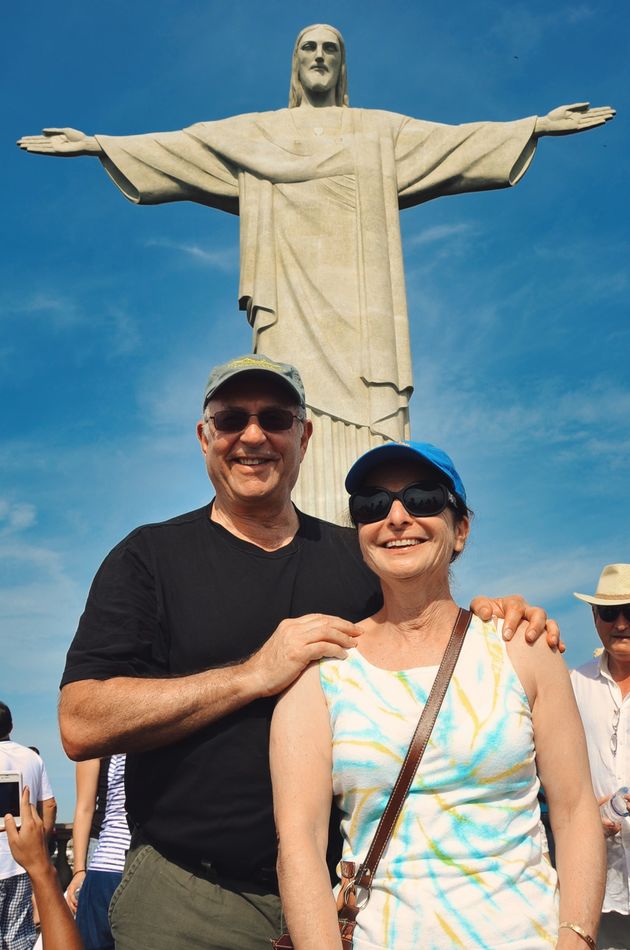
(Download)
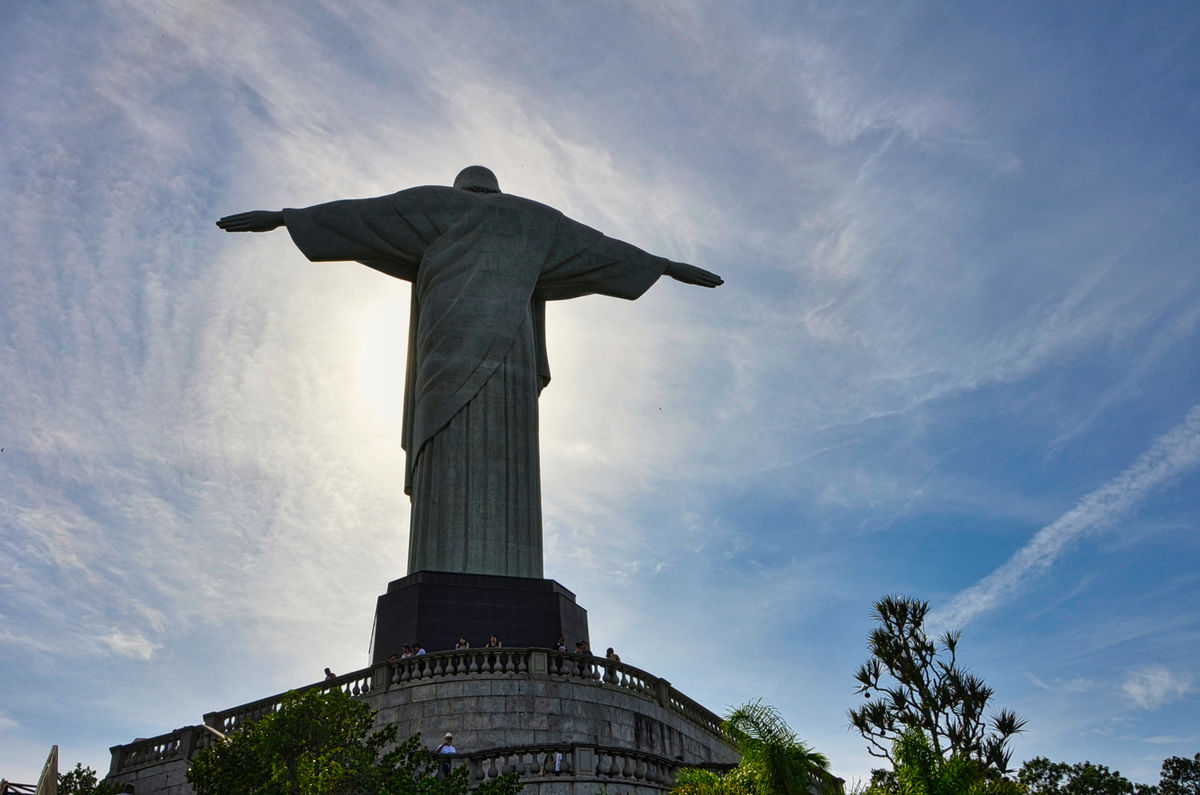
(Download)
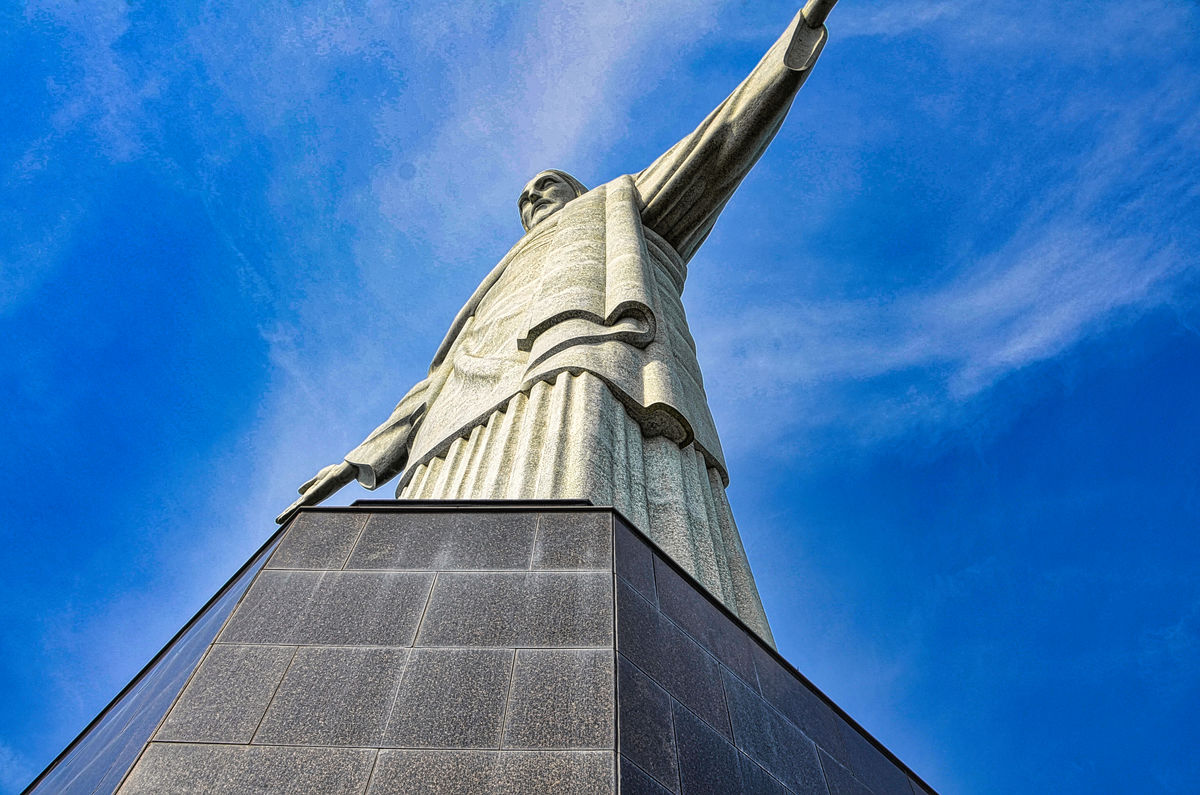
(Download)
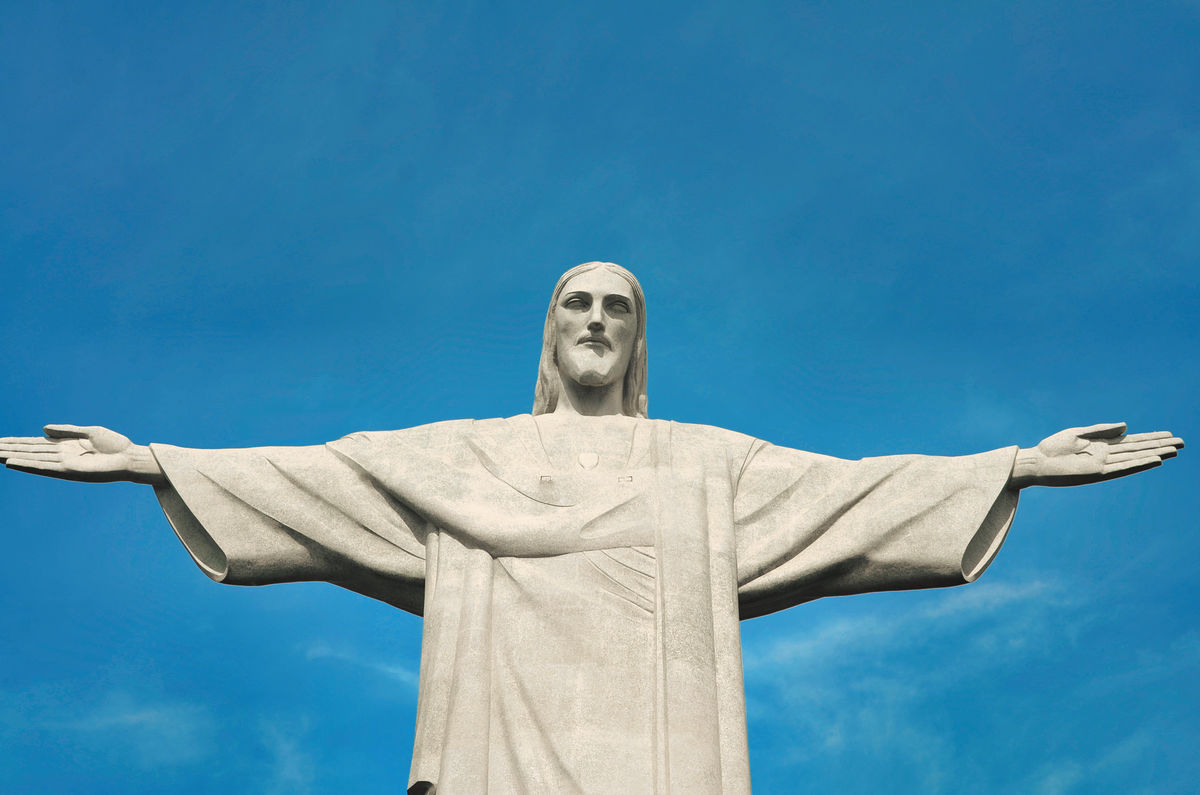
(Download)
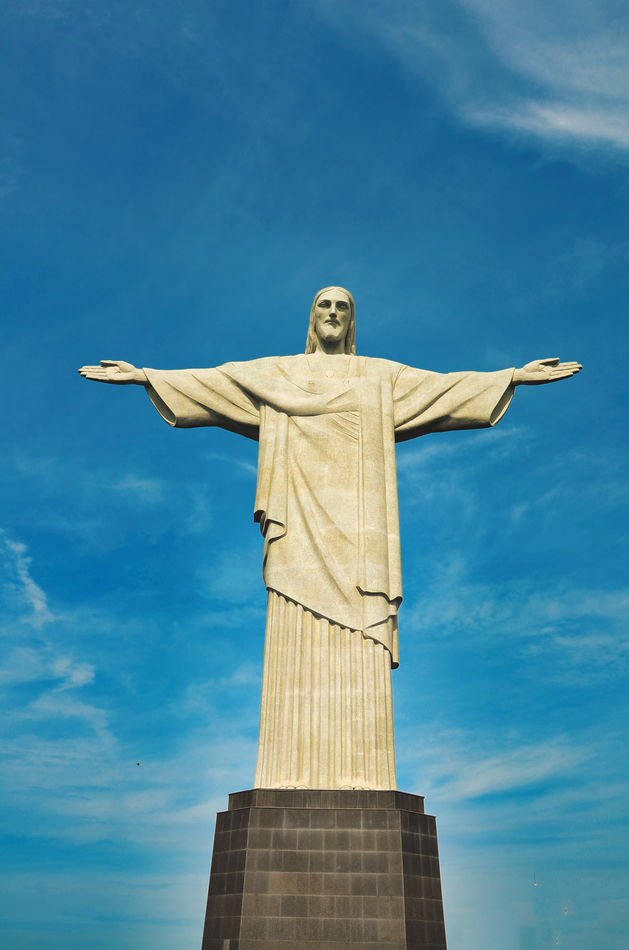
(Download)
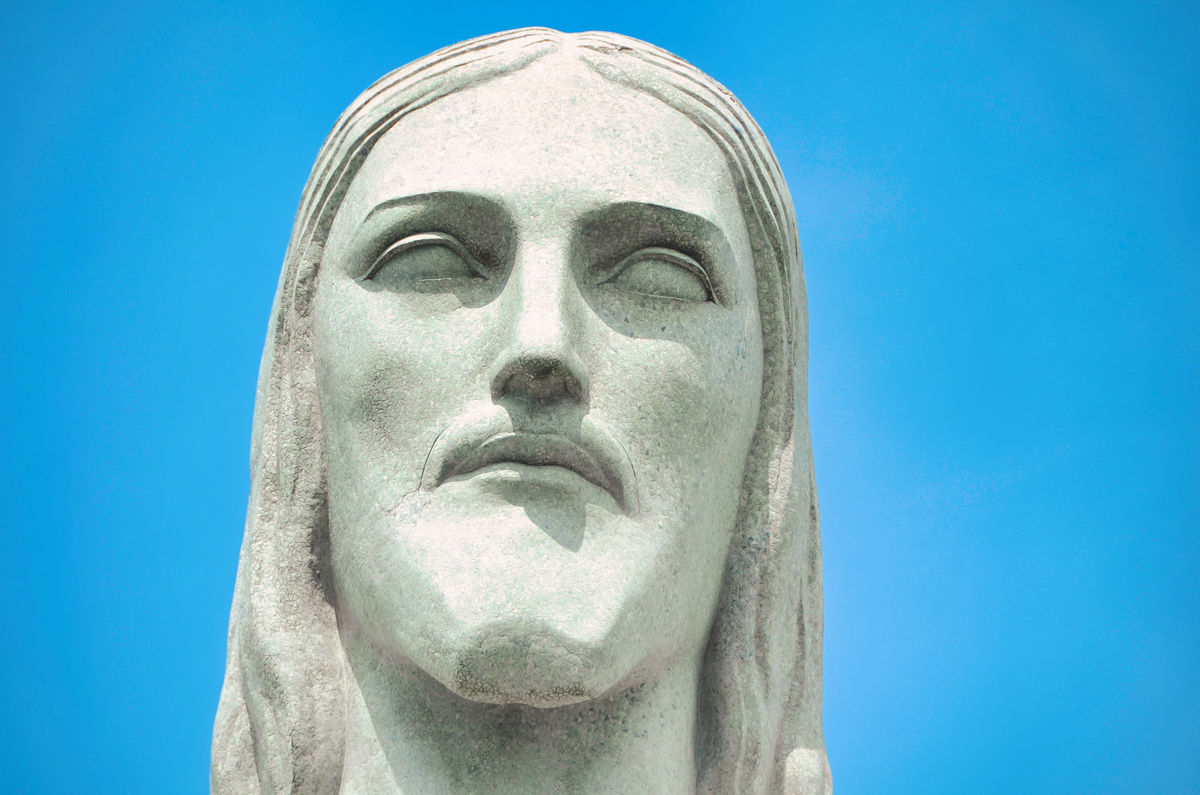
(Download)
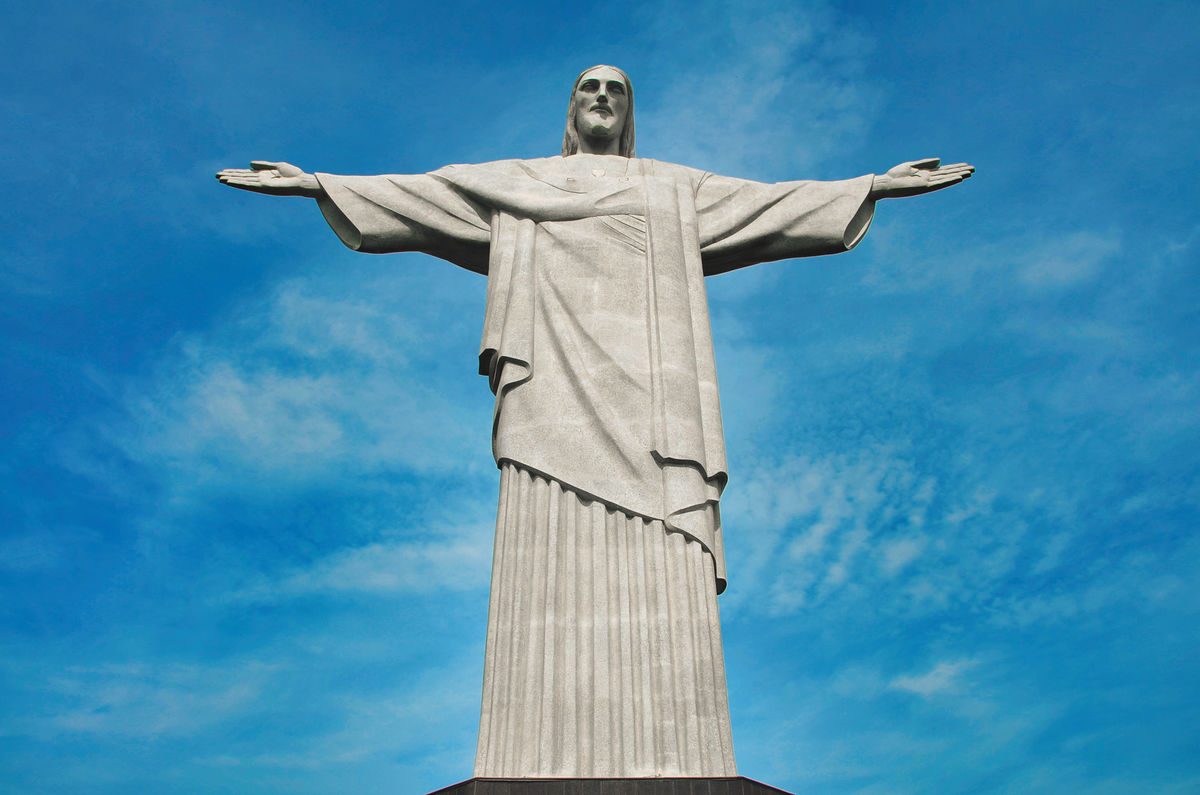
(Download)
The escalators are kind to old knees!
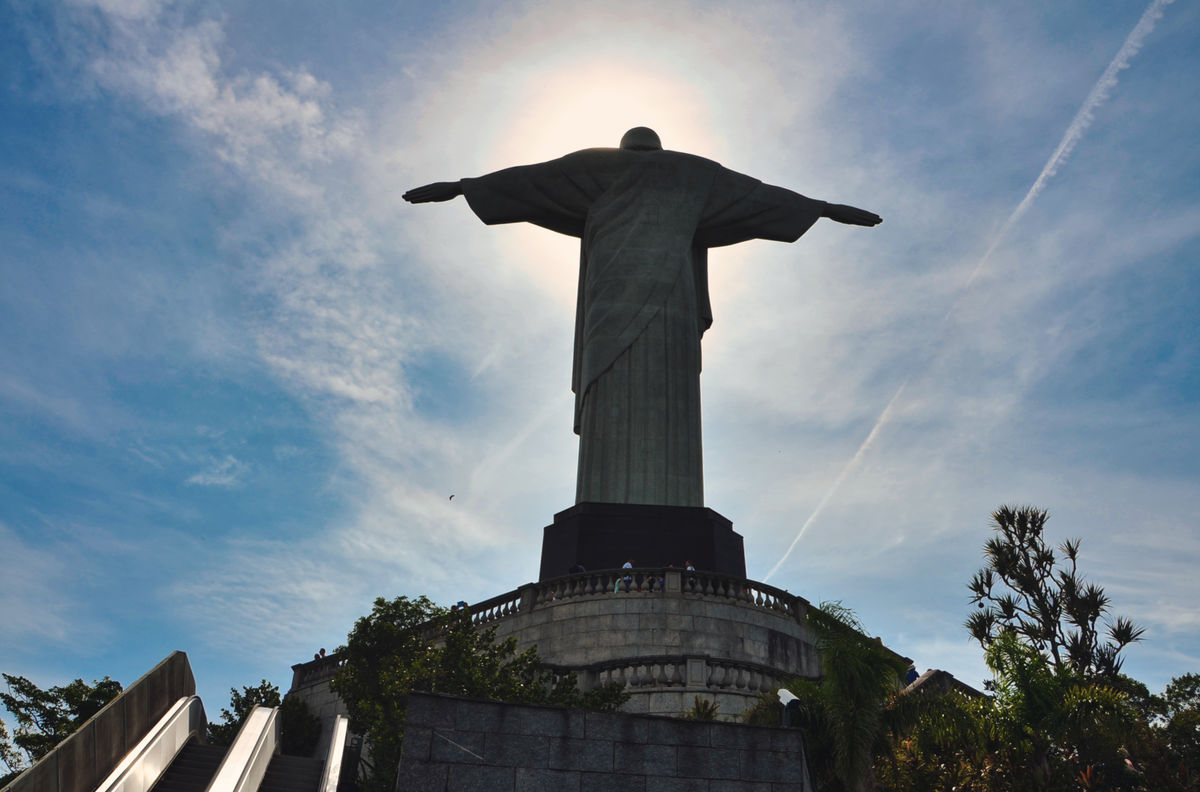
(Download)
Be ready for crowds
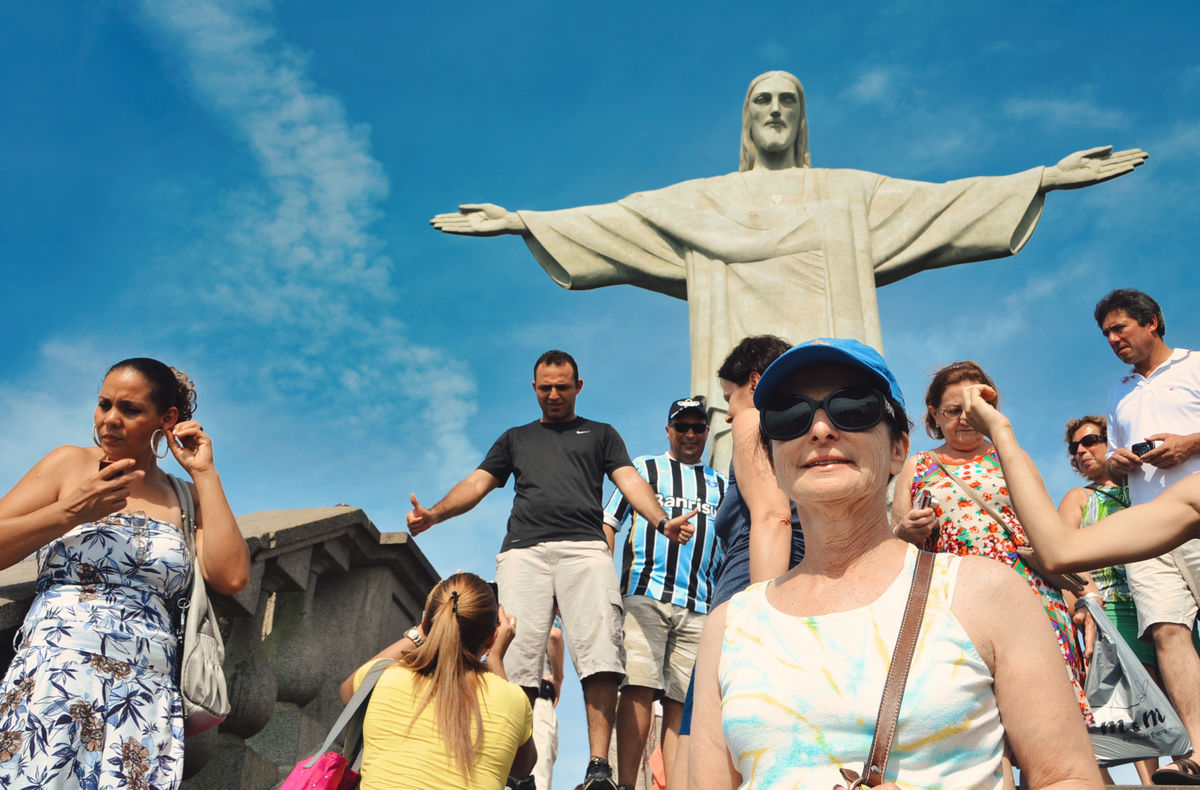
(Download)
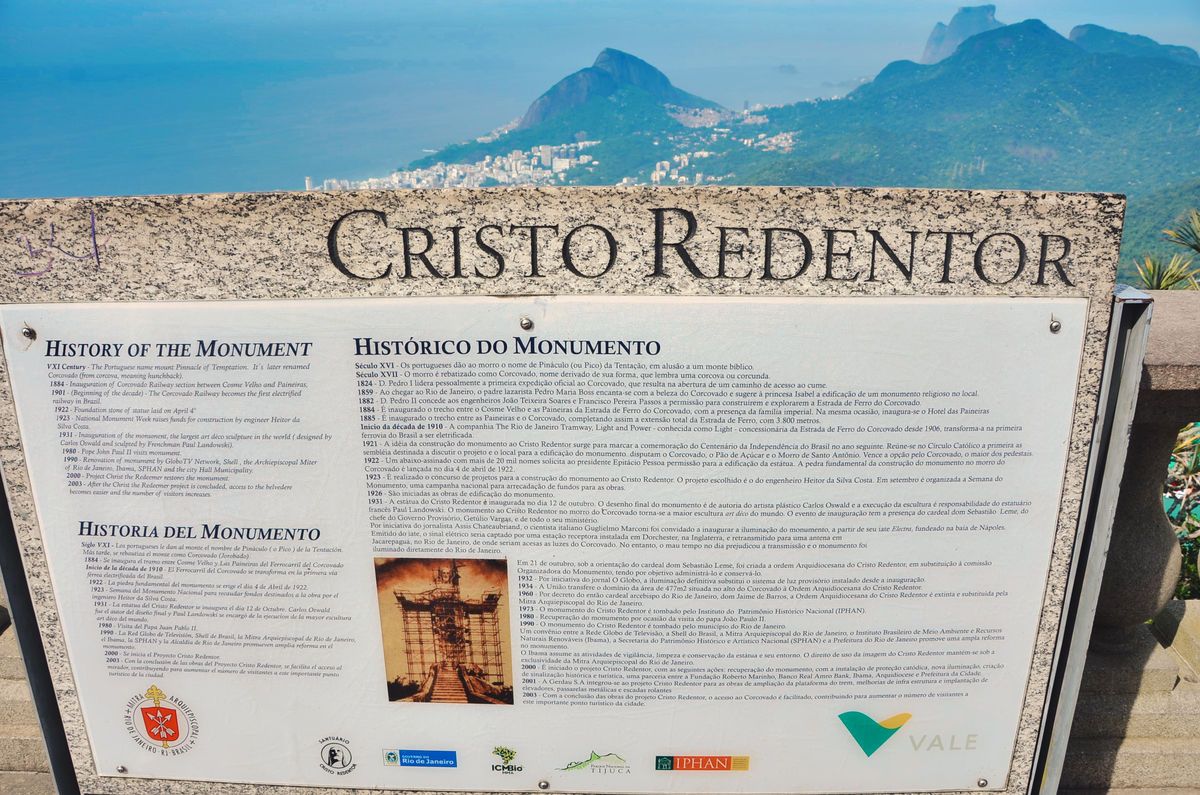
(Download)
Jun 13, 2022 14:51:09 #
Jun 13, 2022 15:09:14 #
Jun 13, 2022 15:37:18 #
Well documented and great shots!
I did notice that your sensor might need a cleaning.
I did notice that your sensor might need a cleaning.
Jun 13, 2022 15:44:57 #
srfmhg wrote:
One of the highlights of our visit to Rio was the ... (show quote)
This magnificent creation always boggles my mind - as your shots have done this time
🏆🔥🏆🔥🏆
Jun 13, 2022 15:46:28 #
tradio wrote:
Well documented and great shots!
I did notice that your sensor might need a cleaning.
I did notice that your sensor might need a cleaning.
If you are referring to the bird to the left of the statue base in number 8, it's a bird.
The spot doesn't appear in any other shots.
If you are not referring to the bird, I see nothing that would indicate a dirty sensor.
But I don't pixel peep.

Jun 13, 2022 15:55:06 #
Jun 13, 2022 16:00:58 #
As as young teenager I visited it waaaay back in late '50s. Impressive, and the view! Took the cog-wheel train up.
Jun 13, 2022 16:33:20 #
Jun 13, 2022 17:03:51 #
Jun 13, 2022 17:35:29 #
Jun 13, 2022 17:38:55 #
Longshadow wrote:
If you are referring to the bird to the left of the statue base in number 8, it's a bird.
The spot doesn't appear in any other shots.
If you are not referring to the bird, I see nothing that would indicate a dirty sensor.
But I don't pixel peep.
The spot doesn't appear in any other shots.
If you are not referring to the bird, I see nothing that would indicate a dirty sensor.
But I don't pixel peep.

Take another look at number 3, just to the left of the head.
I thought I seen another image that had something going on in the same area.
What do ya think?
Jun 13, 2022 17:44:22 #
Jun 13, 2022 17:49:23 #
tradio wrote:
Well documented and great shots!
I did notice that your sensor might need a cleaning.
I did notice that your sensor might need a cleaning.
Thanks very much Tradio. I did notice an oil spot in #3 but the dark spot in #8 is a bird. The sensor has since been cleaned and the camera retired until my granddaughter claims it.
Jun 13, 2022 17:50:10 #
joecichjr wrote:
This magnificent creation always boggles my mind - as your shots have done this time
🏆🔥🏆🔥🏆
🏆🔥🏆🔥🏆
Thanks very much for your always generous comments Joe.
If you want to reply, then register here. Registration is free and your account is created instantly, so you can post right away.

